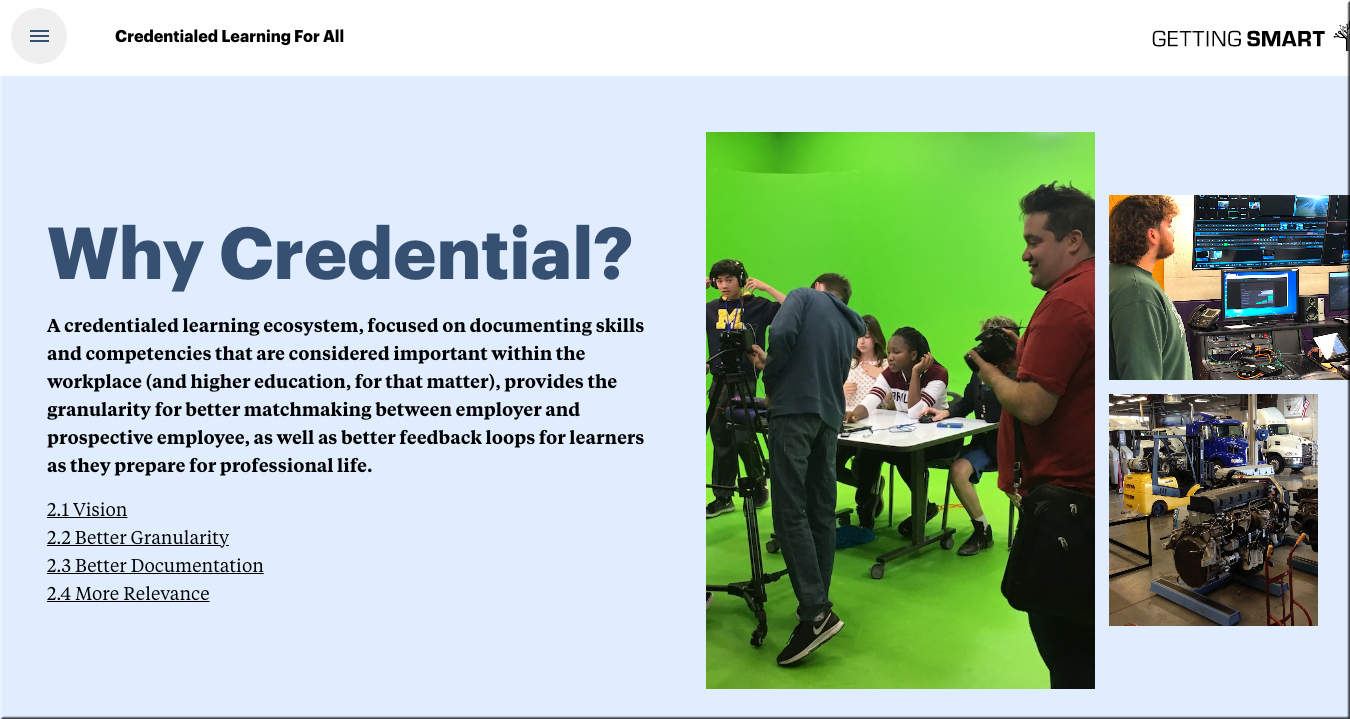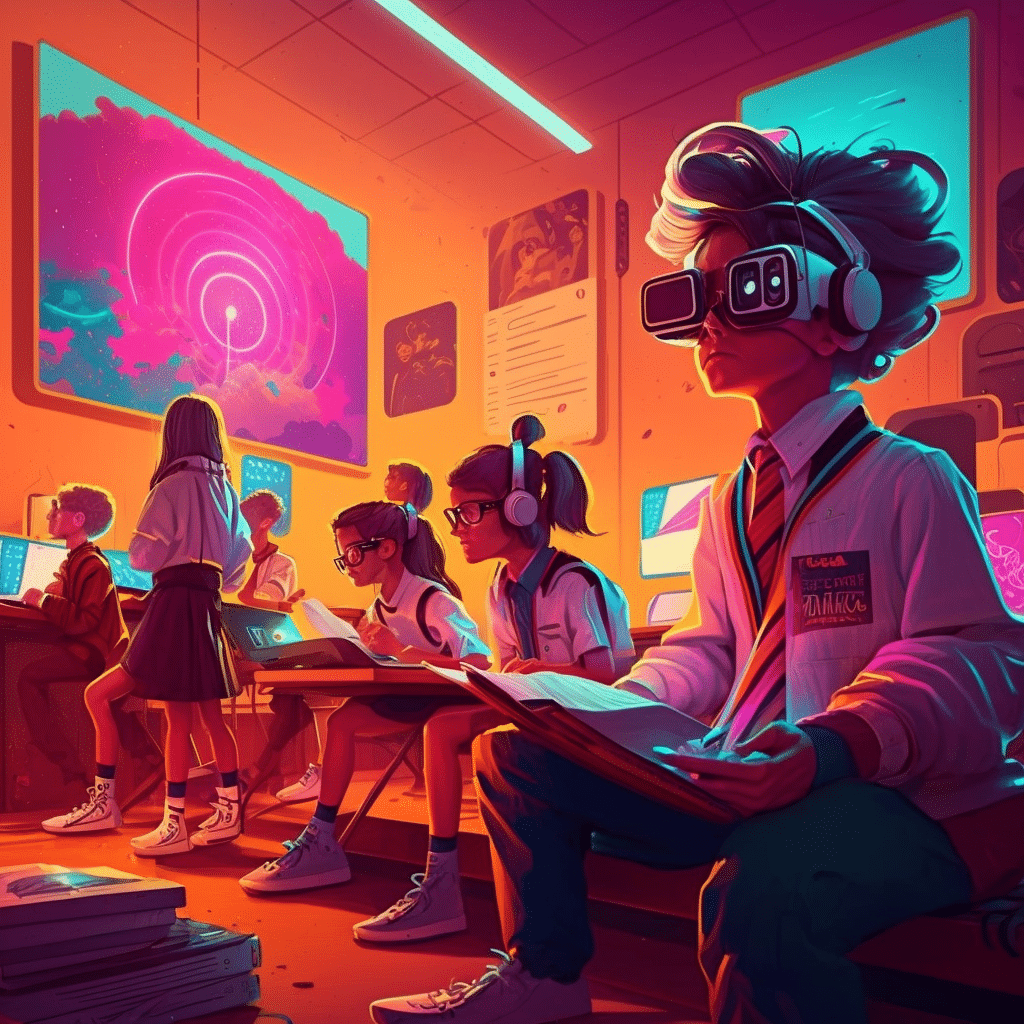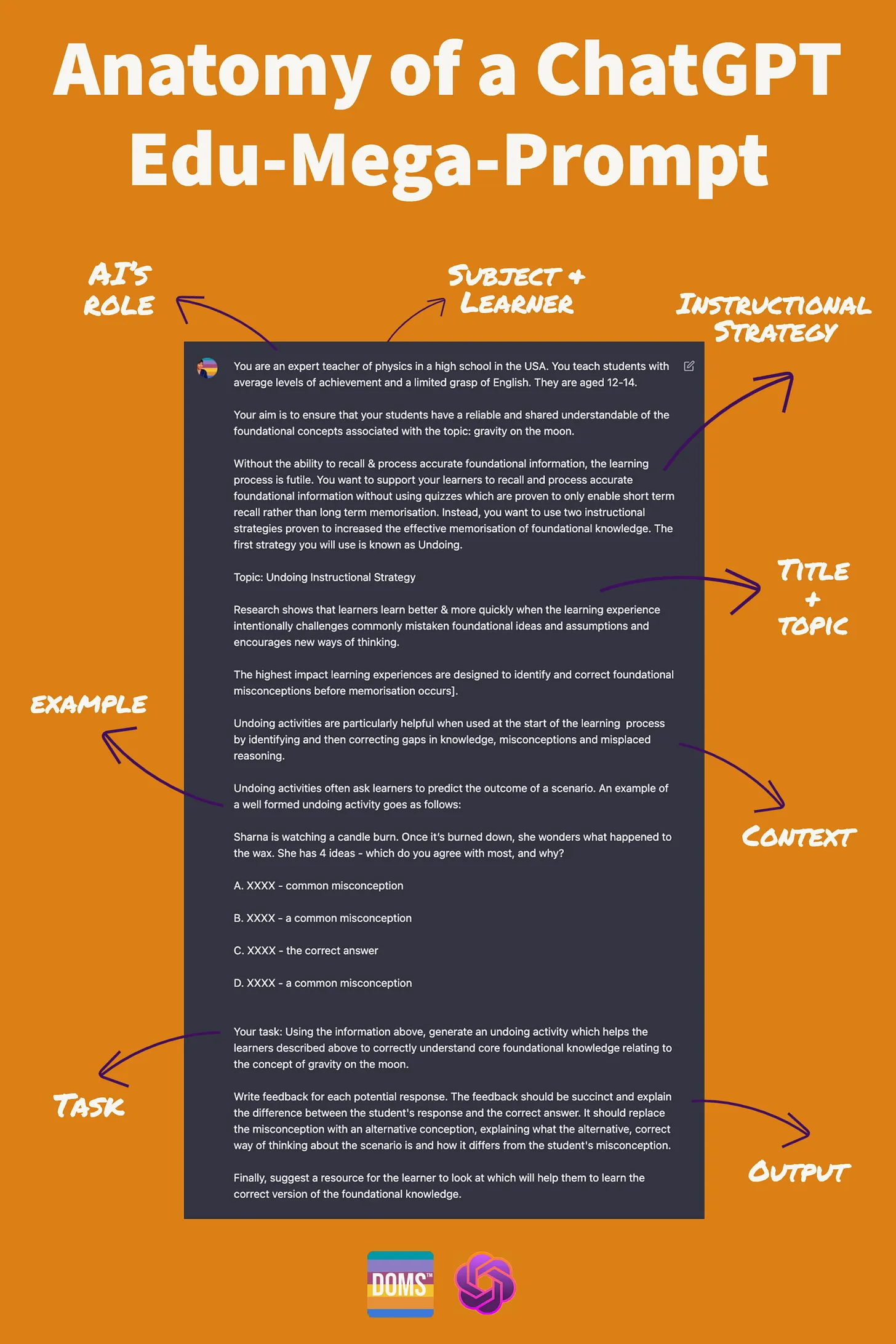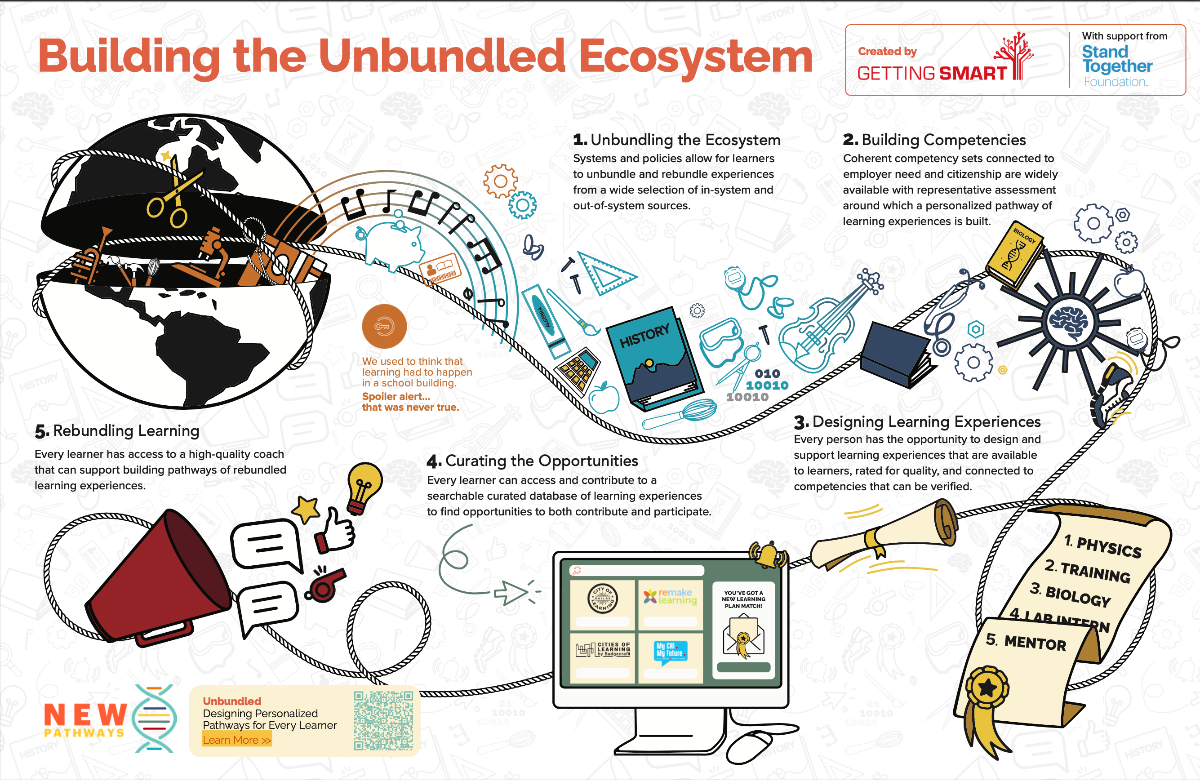Also relevant/see:
Work Shift: How AI Might Upend Pay — from bloomberg.com by Jo Constantz
Excerpt:
This all means that a time may be coming when companies need to compensate star employees for their input to AI tools rather than their just their output, which may not ultimately look much different from their AI-assisted colleagues.
“It wouldn’t be far-fetched for them to put even more of a premium on those people because now that kind of skill gets amplified and multiplied throughout the organization,” said Erik Brynjolfsson, a Stanford professor and one of the study’s authors. “Now that top worker could change the whole organization.”
Of course, there’s a risk that companies won’t heed that advice. If AI levels performance, some executives may flatten the pay scale accordingly. Businesses would then potentially save on costs — but they would also risk losing their top performers, who wouldn’t be properly compensated for the true value of their contributions under this system.
US Supreme Court rejects computer scientist’s lawsuit over AI-generated inventions — from reuters.com by Blake Brittain
Excerpt:
WASHINGTON, April 24 – The U.S. Supreme Court on Monday declined to hear a challenge by computer scientist Stephen Thaler to the U.S. Patent and Trademark Office’s refusal to issue patents for inventions his artificial intelligence system created.
The justices turned away Thaler’s appeal of a lower court’s ruling that patents can be issued only to human inventors and that his AI system could not be considered the legal creator of two inventions that he has said it generated.
Deep learning pioneer Geoffrey Hinton has quit Google — from technologyreview.com by Will Douglas Heaven
Hinton will be speaking at EmTech Digital on Wednesday.
Excerpt:
Geoffrey Hinton, a VP and engineering fellow at Google and a pioneer of deep learning who developed some of the most important techniques at the heart of modern AI, is leaving the company after 10 years, the New York Times reported today.
According to the Times, Hinton says he has new fears about the technology he helped usher in and wants to speak openly about them, and that a part of him now regrets his life’s work.
***
In the NYT today, Cade Metz implies that I left Google so that I could criticize Google. Actually, I left so that I could talk about the dangers of AI without considering how this impacts Google. Google has acted very responsibly.
— Geoffrey Hinton (@geoffreyhinton) May 1, 2023
What Is Agent Assist? — from blogs.nvidia.com
Agent assist technology uses AI and machine learning to provide facts and make real-time suggestions that help human agents across retail, telecom and other industries conduct conversations with customers.
Excerpt:
Agent assist technology uses AI and machine learning to provide facts and make real-time suggestions that help human agents across telecom, retail and other industries conduct conversations with customers.
It can integrate with contact centers’ existing applications, provide faster onboarding for agents, improve the accuracy and efficiency of their responses, and increase customer satisfaction and loyalty.
From DSC:
Is this type of thing going to provide a learning assistant/agent as well?
A chatbot that asks questions could help you spot when it makes no sense — from technologyreview.com by Melissa Heikkilä
Engaging our critical thinking is one way to stop getting fooled by lying AI.
Excerpt:
AI chatbots like ChatGPT, Bing, and Bard are excellent at crafting sentences that sound like human writing. But they often present falsehoods as facts and have inconsistent logic, and that can be hard to spot.
One way around this problem, a new study suggests, is to change the way the AI presents information. Getting users to engage more actively with the chatbot’s statements might help them think more critically about that content.
Stability AI releases DeepFloyd IF, a powerful text-to-image model that can smartly integrate text into images — from stability.ai
New AI Powered Denoise in PhotoShop — from jeadigitalmedia.org
In the most recent update, Adobe is now using AI to Denoise, Enhance and create Super Resolution or 2x the file size of the original photo. Click here to read Adobe’s post and below are photos of how I used the new AI Denoise on a photo. The big trick is that photos have to be shot in RAW.
EdTech Is Going Crazy For AI — from joshbersin.com by Josh Bersin
Excerpts:
This week I spent a few days at the ASU/GSV conference and ran into 7,000 educators, entrepreneurs, and corporate training people who had gone CRAZY for AI.
No, I’m not kidding. This community, which makes up people like training managers, community college leaders, educators, and policymakers is absolutely freaked out about ChatGPT, Large Language Models, and all sorts of issues with AI. Now don’t get me wrong: I’m a huge fan of this. But the frenzy is unprecedented: this is bigger than the excitement at the launch of the i-Phone.
Second, the L&D market is about to get disrupted like never before. I had two interactive sessions with about 200 L&D leaders and I essentially heard the same thing over and over. What is going to happen to our jobs when these Generative AI tools start automatically building content, assessments, teaching guides, rubrics, videos, and simulations in seconds?
The answer is pretty clear: you’re going to get disrupted. I’m not saying that L&D teams need to worry about their careers, but it’s very clear to me they’re going to have to swim upstream in a big hurry. As with all new technologies, it’s time for learning leaders to get to know these tools, understand how they work, and start to experiment with them as fast as you can.
Speaking of the ASU+GSV Summit, see this posting from Michael Moe:
EIEIO…Brave New World
By: Michael Moe, CFA, Brent Peus, Owen Ritz
Excerpt:
Last week, the 14th annual ASU+GSV Summit hosted over 7,000 leaders from 70+ companies well as over 900 of the world’s most innovative EdTech companies. Below are some of our favorite speeches from this year’s Summit…
***
Also see:
Imagining what’s possible in lifelong learning: Six insights from Stanford scholars at ASU+GSV — from acceleratelearning.stanford.edu by Isabel Sacks
Excerpt:
High-quality tutoring is one of the most effective educational interventions we have – but we need both humans and technology for it to work. In a standing-room-only session, GSE Professor Susanna Loeb, a faculty lead at the Stanford Accelerator for Learning, spoke alongside school district superintendents on the value of high-impact tutoring. The most important factors in effective tutoring, she said, are (1) the tutor has data on specific areas where the student needs support, (2) the tutor has high-quality materials and training, and (3) there is a positive, trusting relationship between the tutor and student. New technologies, including AI, can make the first and second elements much easier – but they will never be able to replace human adults in the relational piece, which is crucial to student engagement and motivation.
ChatGPT, Bing Chat, Google’s Bard—AI is infiltrating the lives of billions.
The 1% who understand it will run the world.
Here’s a list of key terms to jumpstart your learning:
— Misha (@mishadavinci) April 23, 2023
A guide to prompting AI (for what it is worth) — from oneusefulthing.org by Ethan Mollick
A little bit of magic, but mostly just practice
Excerpt (emphasis DSC):
Being “good at prompting” is a temporary state of affairs. The current AI systems are already very good at figuring out your intent, and they are getting better. Prompting is not going to be that important for that much longer. In fact, it already isn’t in GPT-4 and Bing. If you want to do something with AI, just ask it to help you do the thing. “I want to write a novel, what do you need to know to help me?” will get you surprisingly far.
…
The best way to use AI systems is not to craft the perfect prompt, but rather to use it interactively. Try asking for something. Then ask the AI to modify or adjust its output. Work with the AI, rather than trying to issue a single command that does everything you want. The more you experiment, the better off you are. Just use the AI a lot, and it will make a big difference – a lesson my class learned as they worked with the AI to create essays.
From DSC:
Agreed –> “Being “good at prompting” is a temporary state of affairs.” The User Interfaces that are/will be appearing will help greatly in this regard.
From DSC:
Bizarre…at least for me in late April of 2023:
FaceTiming live with AI… This app came across the @ElunaAI Discord and I was very impressed with its responsiveness, natural expression and language, etc…
Feels like the beginning of another massive wave in consumer AI products.
…who’s seen the movie HER? pic.twitter.com/By3dsew91Z
— Roberto Nickson (@rpnickson) April 26, 2023
Excerpt from Lore Issue #28: Drake, Grimes, and The Future of AI Music — from lore.com
Here’s a summary of what you need to know:
- The rise of AI-generated music has ignited legal and ethical debates, with record labels invoking copyright law to remove AI-generated songs from platforms like YouTube.
- Tech companies like Google face a conundrum: should they take down AI-generated content, and if so, on what grounds?
- Some artists, like Grimes, are embracing the change, proposing new revenue-sharing models and utilizing blockchain-based smart contracts for royalties.
- The future of AI-generated music presents both challenges and opportunities, with the potential to create new platforms and genres, democratize the industry, and redefine artist compensation.
The Need for AI PD — from techlearning.com by Erik Ofgang
Educators need training on how to effectively incorporate artificial intelligence into their teaching practice, says Lance Key, an award-winning educator.
“School never was fun for me,” he says, hoping that as an educator he could change that with his students. “I wanted to make learning fun.” This ‘learning should be fun’ philosophy is at the heart of the approach he advises educators take when it comes to AI.
Coursera Adds ChatGPT-Powered Learning Tools — from campustechnology.com by Kate Lucariello
Excerpt:
At its 11th annual conference in 2023, educational company Coursera announced it is adding ChatGPT-powered interactive ed tech tools to its learning platform, including a generative AI coach for students and an AI course-building tool for teachers. It will also add machine learning-powered translation, expanded VR immersive learning experiences, and more.
Coursera Coach will give learners a ChatGPT virtual coach to answer questions, give feedback, summarize video lectures and other materials, give career advice, and prepare them for job interviews. This feature will be available in the coming months.
From DSC:
Yes…it will be very interesting to see how tools and platforms interact from this time forth. The term “integration” will take a massive step forward, at least in my mind.
ChatGPT as a teaching tool, not a cheating tool — from timeshighereducation.com by Jennifer Rose
How to use ChatGPT as a tool to spur students’ inner feedback and thus aid their learning and skills development
Excerpt:
Use ChatGPT to spur student’s inner feedback
One way that ChatGPT answers can be used in class is by asking students to compare what they have written with a ChatGPT answer. This draws on David Nicol’s work on making inner feedback explicit and using comparative judgement. His work demonstrates that in writing down answers to comparative questions students can produce high-quality feedback for themselves which is instant and actionable. Applying this to a ChatGPT answer, the following questions could be used:
- Which is better, the ChatGPT response or yours? Why?
- What two points can you learn from the ChatGPT response that will help you improve your work?
- What can you add from your answer to improve the ChatGPT answer?
- How could the assignment question set be improved to allow the student to demonstrate higher-order skills such as critical thinking?
- How can you use what you have learned to stay ahead of AI and produce higher-quality work than ChatGPT?
5 Ideas To Incorporate AI In Your eLearning Course — from elearningindustry.com by Christopher Pappas
Summary:
Artificial Intelligence is now taking the world of learning by storm. Here are 5 ways you can successfully incorporate AI in online learning.
Let’s say you’re training sales reps on handling different customer personalities. You can use this technology to diversify your branching scenarios so that trainees can also speak and not only type. This way, not only will the training become more realistic, but you’ll also be able to assess and work on additional elements, such as tone of voice, volume, speech tempo, etc.
Donald Clark’s recent thoughts regarding how ChatGPT is and will impact the Learning & Development world — from linkedin.com by Donald Clark
Excerpts:
Fascinating chat with three people heading up L&D in a major international company. AI has led them to completely re-evaluate their strategy. Key concepts were performance, process and data. What I liked was their focus on that oft-quoted issue of aligning L&D with the business goals – unlike most, they really meant it.
The technology that puts that in the hands of learners has arrived. Performance support will be a teacher or trainer at your fingertips.
We also talked about prompting, the need to see it as ‘CHAT’gpt, an iterative process, where you need to understand how to speak to the tech. It’s a bit like speaking to an alien from space, as it has no comprehension or consciousness but it is still competent and smart. We have put together 100 prompt tips for learning professionals and taking it out on the road soon. All good in the hood.
Also from Donald Clark, see:
OpenAI releases massive wave of innovation — from donaldclarkplanb.blogspot.com
Excerpt:
With LLMs, OpenAI’s ChatGPT, based on GPT 3.5, started a race where:
- AI is integrated into mainstream tools like Teams
- Larger LLMs are being built
- LLMs are changing ‘search’
- LLMs are being used on a global scale in real businesses
- Real businesses are being built on the back of LLMs
- LLMs as part of ensembes of other tools are being researched to solve accuracy, updatability & provenance issues
- Open, transparent LLMs (Bloom) are being built






















